








in the foothills of the Ozark Mountains in Missouri, High Adventure Ranch offers all of the excitement of western big game hunting without the costs and hassles.
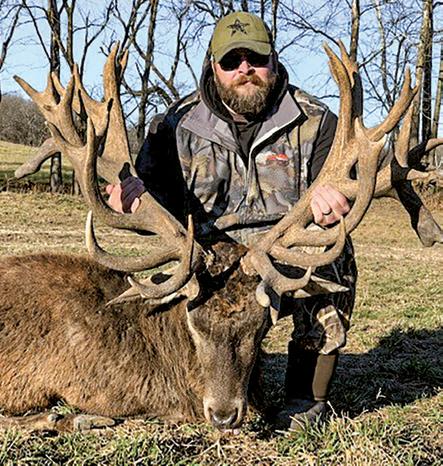
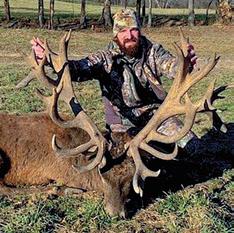
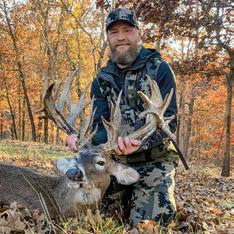
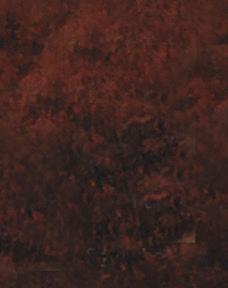


Be prepared for a fair chase hunt! With over 3 square miles of prime natural habitat, our ranch provides challenges to even the most seasoned hunter, but our expe rienced guides and “No Game, No Pay” policy practically ensure that you won’t go home empty handed. In addi tion, High Adventure’s hunting season is year-round, allowing ample time to fit the most demanding schedule.
While our whitetail, elk, wild boar and red stag hunts top our hunter’s most popular lists, hunters from around the world have visited our ranch, hunting everything from American bison, black buck, fallow deer to Spanish goats and African game.
So, whether you desire a 10-point whitetail mount for



trophy room or simply the thrill and challenge of


down one of our many elusive big game animals,
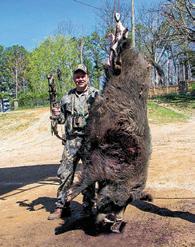
Adventure Ranch
back




memories of an unparalleled



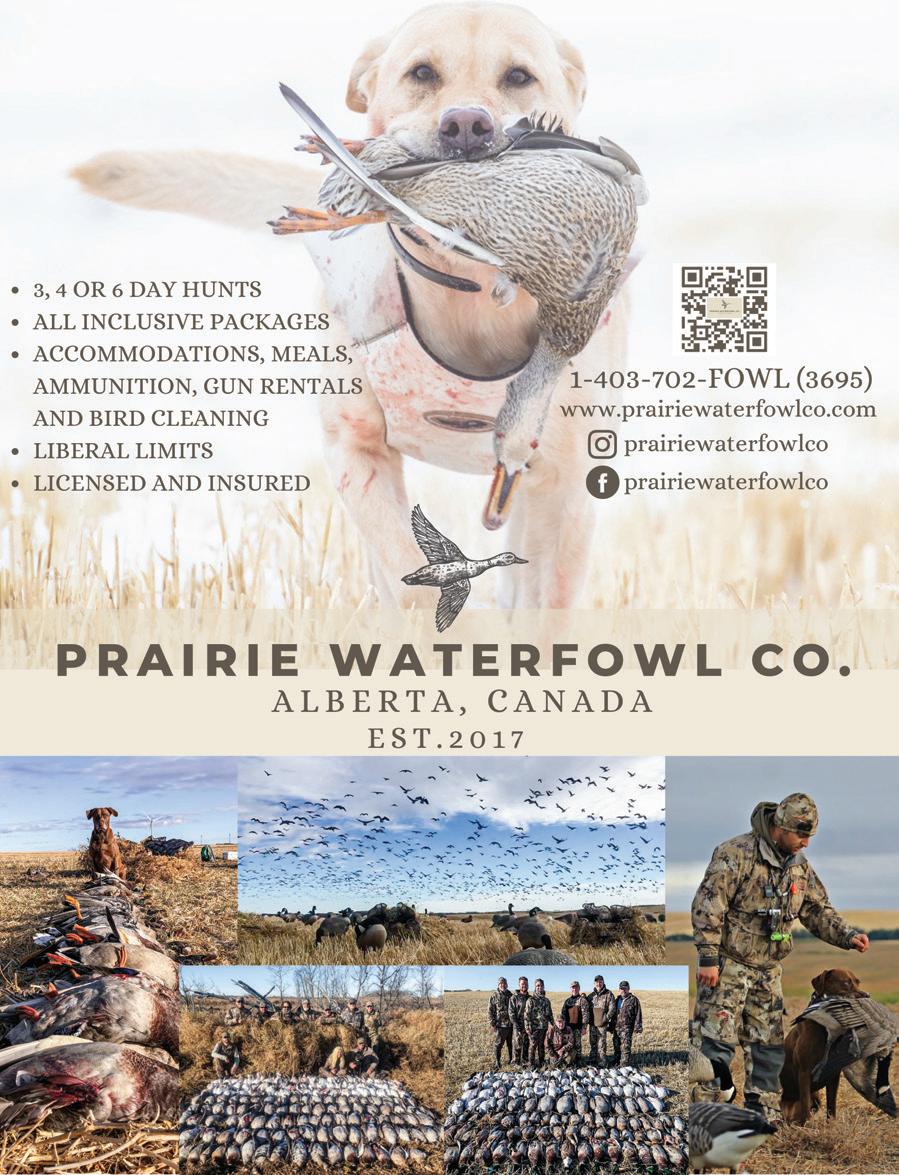

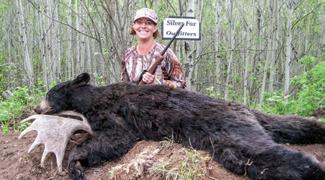

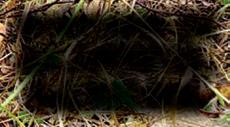
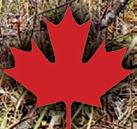

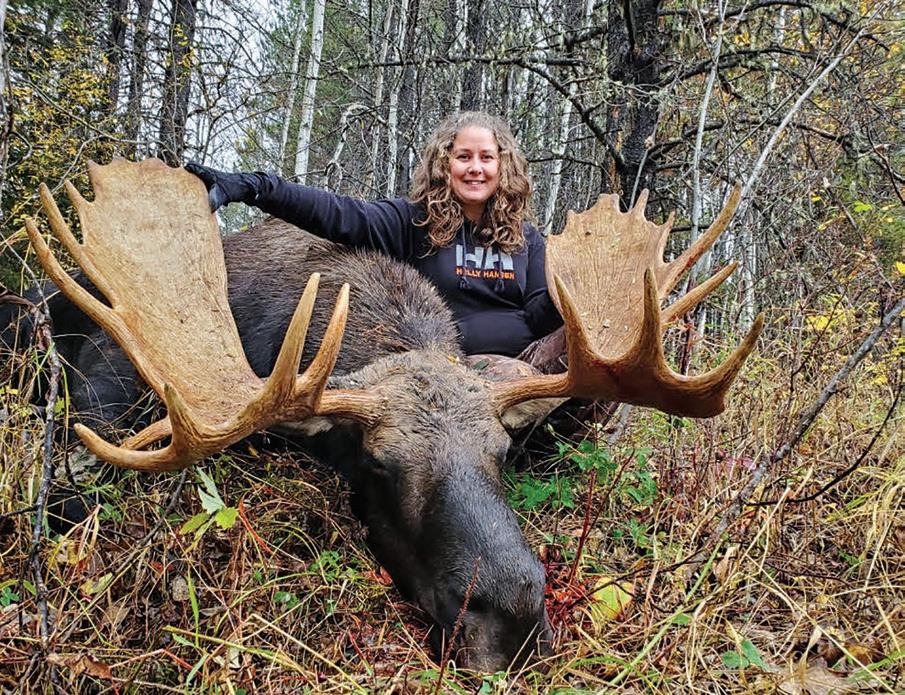

James R.
Larry Csonka,
Haugen,
Yarnold
ACCOUNT

Hanna Gagley,
Smith
DESIGNER
Dihle, Scott Haugen,


Kellogg, Brian Watkins
Griffin, Riland Risdan,
Slisko-Cooper
Hines,
Sanborn
Eske
Larry Csonka is a Pro Football Hall of Famer, and while his Miami Dolphins career –highlighted by two Super Bowl titles and a record 17-0 1972 season – has defined him, the 75-year-old is also proud of his Alaska connections from hunting and fishing adventures in the Last Frontier.


(LARRY CSONKA COLLECTION)
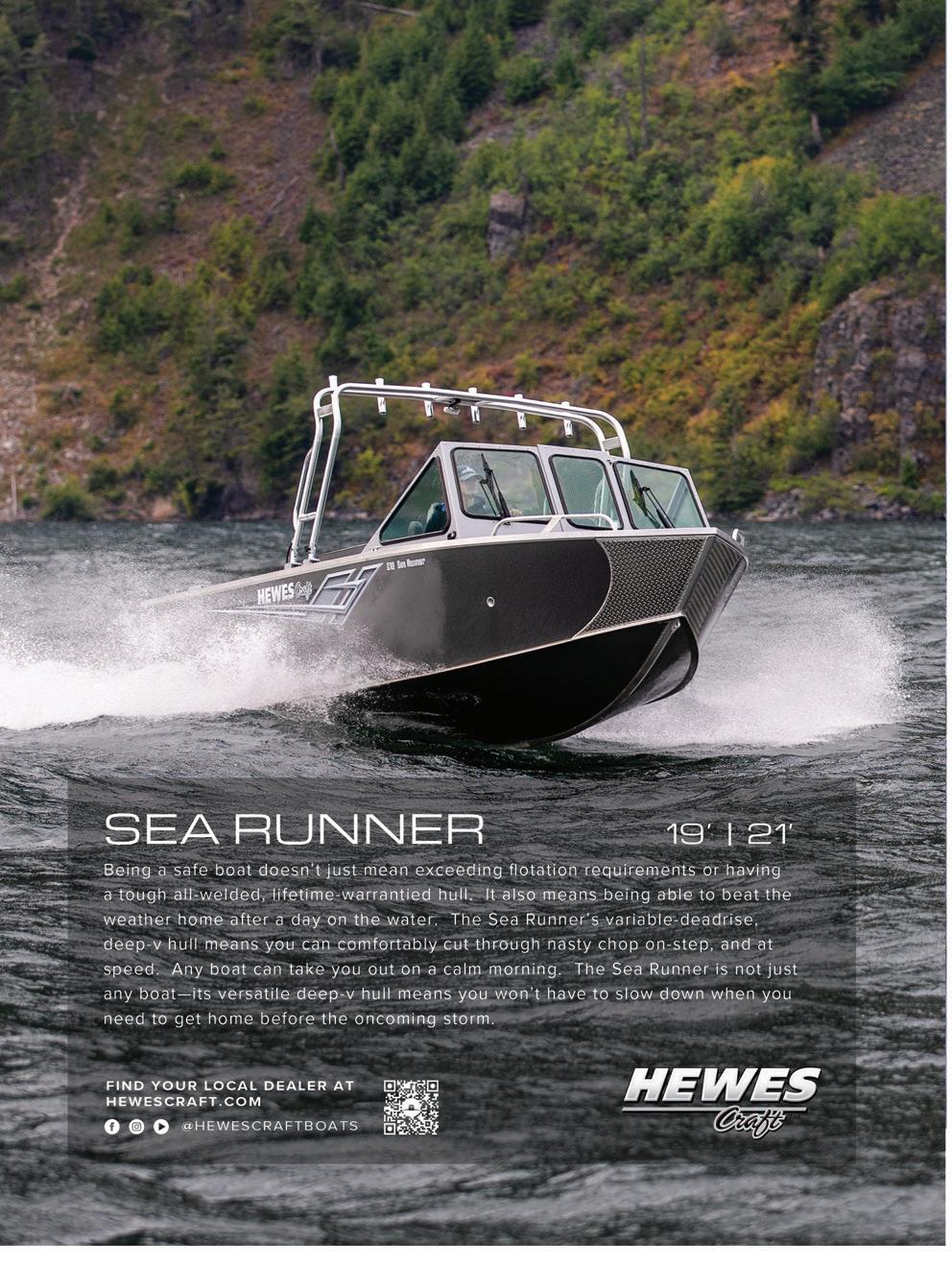

Last year, bowhunters Brian Watkins and Trevor Embry had an epic mountain goat hunt on Kodiak. But perhaps the omen of forecasted heavy rain should have convinced them a return this season wouldn’t be a slam dunk. True, there was no shortage of goats along the island’s steep cli s, but those hanging walls of rock can be possessive of their own too. Find out how Watkins’ and Embry’s adventure unfolded.
We introduced you to the great Pro Football Hall of Fame running back Larry Csonka back in 2014. Csonka is just as proud of his connection to Alaska’s outdoors as he is to his two Super Bowl victories, which included an historic perfect season that has never been matched. Now 75, Csonka has written a memoir about his career and some of the highs and lows he’s experienced. Check out an excerpt from the book, and we also caught up with “Zonk” for a candid conversation.

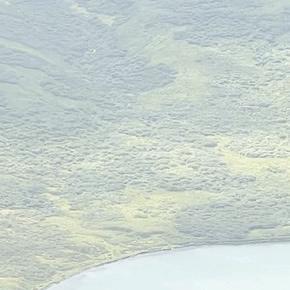
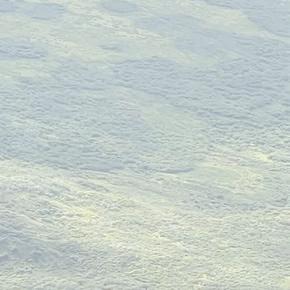
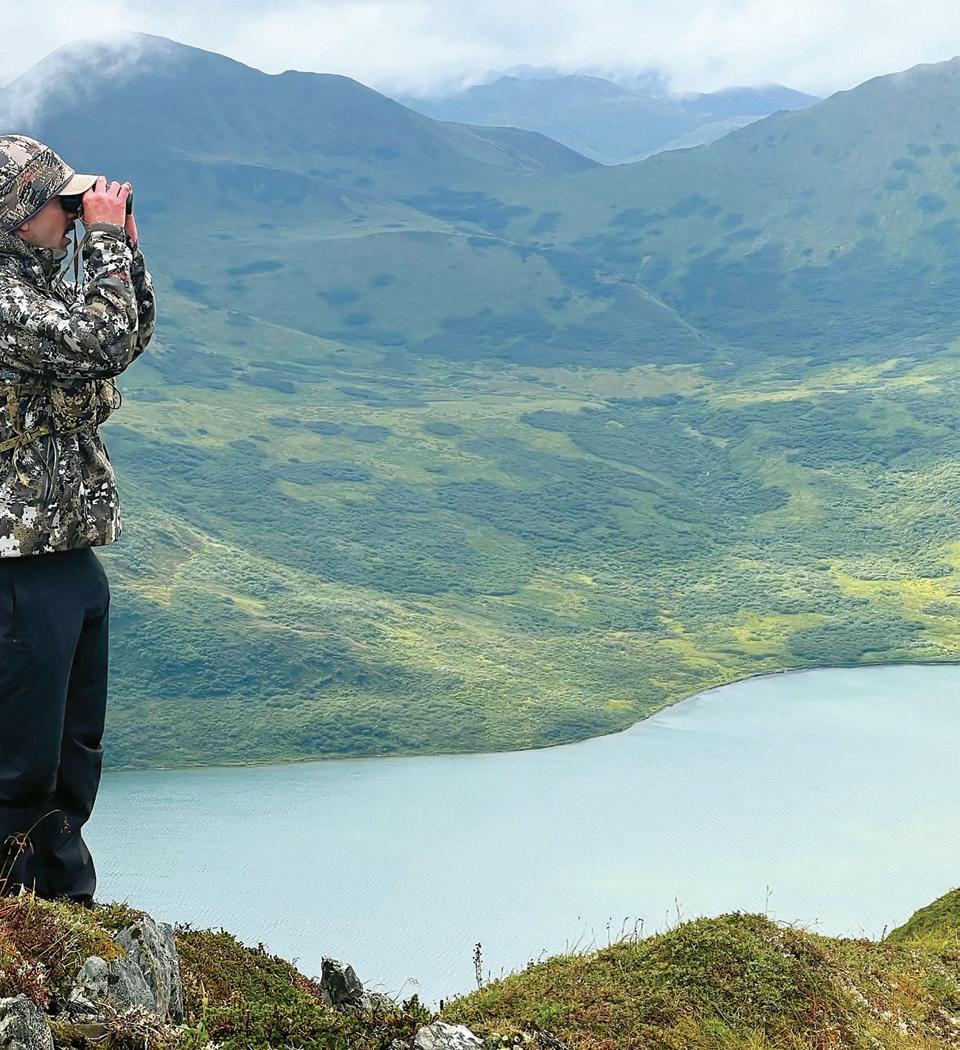
California-based outdoorsman Cal Kellogg has regularly taken in some of the Last Frontier’s best fishing experiences, so he knows a thing or two about the planning and packing process. As many hunters prepare for fall excursions and anglers start looking into 2023 salmon trips, Kellogg o ers up some of his checklist items that you too should consider before making your big getaway.
You never know what might go into and come out of the river. When Scott Haugen was fishing Bristol Bay’s Egegik River for coho, he happened to lose a tiny camera he’d tied onto his rig. You won’t believe what happened next! And in the other half of our From Field to Fire column, chef Ti any Haugen o ers up a slowcooked big game shanks recipe.




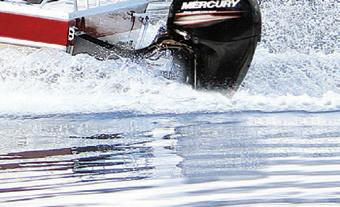

Our remote Alaskan fishing lodge is situated on the upper stretches of the beautiful Egegik River. You’ll watch some of Alaska’s most stunning sunrises, complete with a distant, active volcano. We are a fishing camp specializing in coho fishing, brown bear viewing, and flyout fishing adventures to even more remote destinations in the Last Frontier.

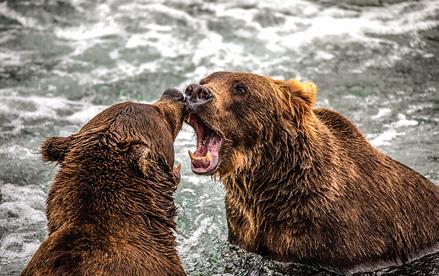

The Egegik River is touted by many experienced anglers as the best silver salmon stream in all of Alaska. Becharof Lodge On The Egegik River was the first fishing lodge to become established on the breathtaking Egegik River, and is less than a 5 minute boat ride from some of the best fishing holes on the entire river.
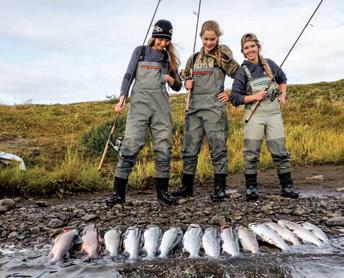


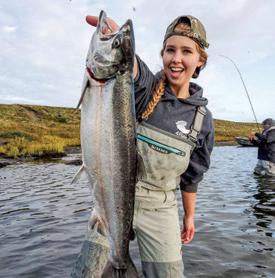
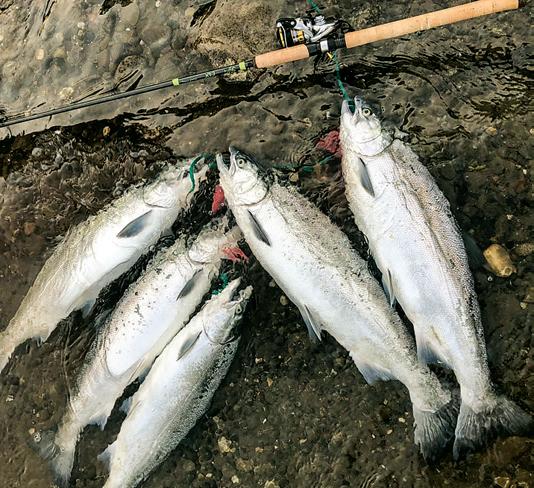
Included in your fishing trip:
• 5 days fishing/5 nights stay in camp
• Experienced, fully guided fishing.
• Comfortable cabins furnished with beds, cozy comforters
• Home cooked meals, snacks, and nonalcoholic beverages.
bedding.
• Transportation from the lodge to prime fishing holes on the Egegik River.
• Freezing and vacuum sealing of your fish, up to 50 lbs., per angler.
As a journalist, you never know when you’ll get to ask an interview subject that question that got away the first time. I lived this mantra as I got another crack at Larry Csonka.
I first got to know the Pro Football Hall of Famer and Alaskan outdoors lover in 2014 for a cover story profile. After our 45-minute conversation I kicked myself for not asking him about his brief acting career. (Besides being an angler, I’m a movie geek.)



Of the handful of credits Csonka has on his IMDB page, most are on television series episodes (he also had a stint co-hosting the ahead-of-its-time reality series, American Gladiators). But it probably slipped my mind the first time that Csonka had a small role in one of my favorite movies, Midway. That 1976 film chronicled one of the most tideturning battles of World War II, which was America’s first decisive victory over the Empire of Japan in the Pacific Theater.
It’s an epic flick – if not a little over the top – with an all-star cast headlined by distinguished thespians Henry Fonda, Charlton Heston, Glenn Ford and Hal Holbrook. My Navy veteran dad and I must have watched Midway six or seven times over all of our years hanging out together.
Csonka, fresh o of two Super Bowl victories as a Miami Dolphins running back, plays a small role in the film, Commander Delaney. His character worked in the engine room on the aircraft carrier U.S.S. Yorktown, which was the only major loss for the U.S. Navy in the battle (by contrast, American dive bombers sunk four of the Japanese Imperial Navy’s biggest carriers).

Csonka’s Delaney appears in two scenes updating his commanding o cers on the ship’s engine room, including breaking the news when all hope for the Yorktown was lost. I asked Csonka to selfcritique his acting chops. It was clear he was going to stick with football.
“Well, acting was a new experience for me. I never was much of an actor. It was fun to be there and be in the presence of the stars who were there when I was around. And I liked those people, but I don’t think I belonged in
that atmosphere,” Csonka told me. “I had tremendous respect for reality, and you won’t get any more real than that third and 1 on the 20-yard line against (Hall of Fame linebacker) Dick Butkus.”
Still, even if he wasn’t quite a Fonda, Heston or Holbrook on set, being part of reenacting a critical WWII moment was enough of a rush to be proud.
“My dad came home after the (atomic bombs were dropped on Hiroshima and Nagasaki). Dad actually got to see the Enola Gay (the B-29 bomber that released
the weapon on Hiroshima). He was on Iwo Jima and they fought there for weeks. He didn’t talk about it a whole lot,” Csonka added. “I was very much a fan of (WWII) history. Three of my uncles also were in the Second World War besides my father. Two were in the European Theater and two in the Pacific. They all had great stories, and when I was a kid I’d be mesmerized by that. That’s as real as it gets.”
That was an Academy Awardwinning answer to those questions I finally was able to ask. -Chris Cocoles

From the Last Frontier to the nation’s capital, the push to permanently protect Bristol Bay’s healthy salmon runs – its sockeye returns set records in 2022 –means money is no object.
In mid-September, the Bristol Bay Defense Fund announced a six-figure advertising campaign featuring video, print and digital platform ads that will all be featured in Alaska and Washington DC.
Meanwhile, the Pebble Mine’s parent company continues to fight to get its project started near the headwaters of a sockeye run that approached the 70-million mark, the biggest ever recorded.
“The recorded salmon runs have never been larger. The chorus of Alaskans has never been louder. Return peace to Bristol Bay, veto Pebble Mine now,” the ads state.
As pressure increases on the DC-based Environmental Protection Agency to continue its halting of the project by going a step further to prevent future comparable mining projects, several restaurants in the nation’s capital joined Bristol Bay Salmon Week, the third week in September, by adding wild Alaska sockeye to their menus. “Finish the job” has been the battle cry from Alaska to the EPA’s headquarters on Pennsylvania Avenue.
“NRDC is proud to join Bristol Bay Tribes, commercial fishermen, and conservation groups this week in DC supporting a decades-long fight led by Alaskans to defend themselves, their communities, and their lands against destruction by a foreign mining company,” Joel Reynolds, Western Director and Senior Attorney for the Natural Resources Defense Council, said. “And make no mistake: This is a fight we must win. The will of the people has never been stronger, the salmon run in Bristol Bay has never been bigger, and the course for EPA has never been clearer. Now is the time for the EPA to veto the Pebble Mine.” Added Alannah Hurley, executive director of United Tribes of Bristol Bay: “As captured in the ad campaign, there is no time to waste and our people will continue to do whatever it takes to protect our home. The EPA must listen to the voices of the people of Bristol Bay and finalize protections this year that stop Pebble Mine for good.”
This print ad complements those on video and digital platforms as part of an aggressive campaign led by the Bristol Bay Defense Fund to pressure the Envi ronmental Protection Agency to imple ment permanent protection for the region from the Pebble Mine and comparable projects. (BRISTOL BAY DEFENSE FUND)


Joseph Hazelwood, whose death was announced in mid-September at the age of 75, was accused of being drunk and negligent when the Exxon Valdez oil tanker ran aground on a Prince William Sound reef on March 24, 1989, causing the worst environmental disaster in U.S. history.

The number of coho that were counted along the Yukon River’s Pilot Station sonar as of September 5, which was more than 50,000 fewer fish than the median cumulative count for the date of 141,925. The low number prompted a closure of the Yukon’s sport silver fishery.
Yockey family found peace in quiet but satisfying
man
on Prince
where they enjoyed
Wales
local


To some, a place like Co man Cove, which has fewer than 200 residents, would epitomize isolation – even though it is on the Prince of Wales Island road system – and foster the type of sheltered upbringing that would stunt the growth of a teenager. It also produces adults who stay after they graduate be cause they are afraid or are unprepared for the real world, another red flag among skeptics to this way of life.
But don’t tell that to the Yockeys.
“I definitely don’t feel like I’m missing anything,” says Nate Yockey, who plans to go to college and eventually become a teacher and basketball coach in Alaska. “I don’t get to see skyscrapers every day, I don’t get to go to McDonald’s or have fast food, I can’t go on a road trip because I live on an island, but I get to walk out side and breathe perfectly clean air. I can go hike up a mountain and see views that no one else in the world can even imagine. I can go hiking for a couple miles into the woods and stand somewhere that no one else has probably ever stood. So no, I don’t think I’m missing out.”
Bill Yockey says it’s more a matter of being happy rather than trying to validate a lifestyle to those who have already made up their minds.
“I never had much desire to move to the Lower 48 because of all of the people; I like to hunt and fish and don’t like sharing my hunting and fishing grounds with a large crowd,” he says. “I come from three generations of loggers and operators, so I had my mind made up what I was going to do by the time I was 20.”
If anything, it was the absence of a down-south type of civilization that made Prince of Wales so appealing. Bill and wife Sara lived in Arizona but chose to go back to Alaska after their youngest (Nevan) was born.
“When we moved back to Co man Cove is when I knew I wanted to stay on the island and raise my boys with the island lifestyle, the way I did when I was growing up,” Bill says. “Co man Cove is where I was born and raised and I feel safe there. I like the feel of a small town and knowing your neighbors.” -Jeff Lund
-Mary Peltola in an interview with Alaska Public Media after defeating, among others, former Gov. Sarah Palin in a special election to finish the late U.S. Rep. Don Young’s term in Congress. Peltola will try to win a full two-year term in the November general election.
”
THEY SAID IT “And it’s demoralizing to see the runs, the salmon runs, the depressed salmon stocks that we’ve been experiencing the last 13 years. And it’s of great concern to me that now silvers are being restricted. This is the third species that we have had very severe restrictions put upon us. And I do think that it is time that the burden of conservation be extended to people far beyond our river systems.”










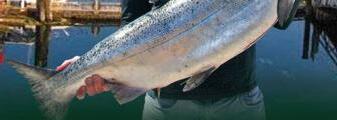
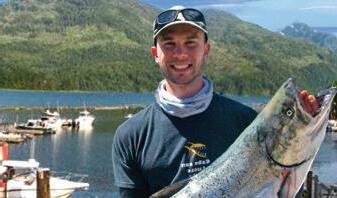










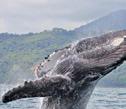





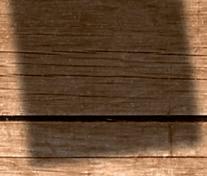










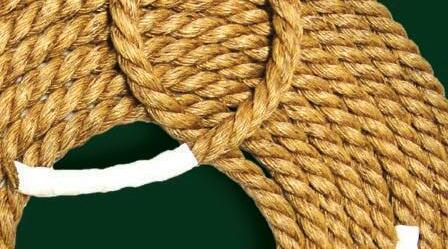












Oct. 1 Goat season opens in Game Management Unit 1C (Southeast Mainland; area draining into Lynn Canal and Stephens Passage between Antler River and Eagle Glacier/River)
Oct. 1 Deer season opens in GMU 3 (Petersburg Management Area and, for residents only, remainder of Mitkof, Woewodski and Butterworth Islands)
Oct. 1 Elk season opens in GMU 3 (Etolin Island)
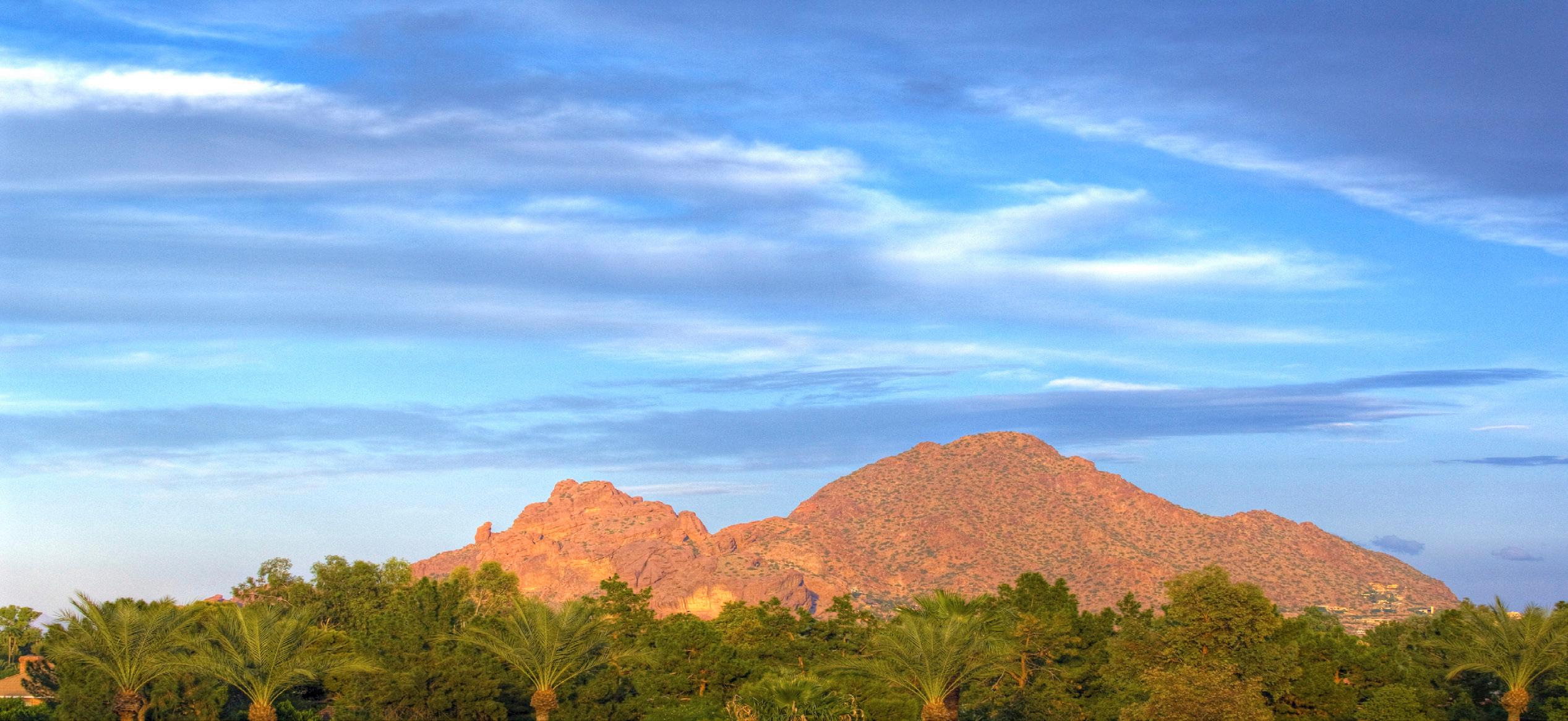
Oct. 1 Moose season opens in GMU 5 (Yakutat, in area east of Dangerous River and Harlequin Lake)

Oct. 1 Elk season opens in GMU 8 (Raspberry Island)
Oct. 1 Black bear season opens in GMU 14C (McHugh Island)
Oct. 7 Goat season opens in GMU 6C (North Gulf Coast and Prince William Sound)

Oct. 8 Elk season opens in GMU 8 (Southwest Afognak, a portion of Afognak Island and adjacent islands)
Oct. 11 Second elk season opens in GMU 8 (Raspberry Island)
Oct. 15 Nonresident deer season opens in GMU 3 (Petersburg/ Wrangell, remainder of Mitkof, Woewodski and Butterworth Islands)
Oct. 15 Youth deer hunt opens in GMU 5

Oct. 15 Moose season opens in GMU 5 (west of Dangerous River and Harlequin Lake, and southwest of Russell and Nunatak Fjords and the East Nunatak Glacier)

Oct. 15 Brown bear season opens in GMU 6D (Montague Island)


Oct. 16 Second/alternate elk season opens in GMU 3
Oct. 23 Elk season opens in GMU 8 (Southwest Afognak and additional areas)
Oct. 23 Third elk season opens in GMU 8 (Raspberry Island)
Oct. 25 Fall brown bear season opens in GMU 8 (Kodiak/Shelikof)

For more information and season dates for Alaska hunts, go to adfg .alaska.gov/index.cfm?adfg=hunting.main.



Kodiak brown bear hunters will get a chance to head out on the island and target bruins starting on Oct. 25. (LISA HUPP/USFWS)

There’s a scene in the 2004 based-on-real-life movie Friday Night Lights – which paid homage to the passion of Texas high school football and also spawned a hit TV series of the same name – when Odessa Permian High School running back Don Billingsley is carrying the football with passion, power and panache. Billingsley is churning toward the goal line, shedding tacklers and spinning like a top in a key moment of the 1988 state championship game depicted in the movie’s climax.
“Billingsley is looking like Larry Csonka,” the announcer excitedly describes the style of running. It’s a pop-culture testament to what a football icon Csonka was, considering the peak of his Pro Football Hall of Fame career took place with the Miami Dolphins more than a decade before that game (and about 30 years prior to the film’s release).
Indeed, the now 75-year-old was larger than life, considering his punishing skills as a running back, his charisma – topped by a Burt Reynolds-ish mustache – and his knack for gaining those tough yards that Billingsley channeled for his high school team.
BY LARRY CSONKA
The weather in Kansas City was unseasonably warm for a Midwest Christmas Day (in 1971). Kicko was at 4 p.m. The temperature was a balmy 63 degrees. Humidity a Miami-like 84 percent.
Our opponents had beaten the Minnesota Vikings in Super Bowl IV, and their championship roster was virtually intact.
best of
A few years back, we introduced you to Csonka for a profile (Alaska Sporting Journal, May 2014) on not only his football prowess but his love for the outdoors, particularly one of his favorite destinations, Alaska. For a guy who grew up in Ohio, starred as a college football running back at Syracuse in upstate New York, held court for the best seasons of his career near the beaches of South Florida and has roots in various other parts of the country, years later, as his new memoir suggests – fittingly, Friday Night Lights director and TV series creator Peter Berg is among those praising the book in its opening pages –some of the autobiography’s best pages reflect on the times he’s spent on the fishing waters and hunting grounds of the Last Frontier.
“The di erent places you go are very rewarding. I love nature, I feel more at home in nature compared with, say, downtown Manhattan,” says Csonka, who played for the New York Giants near the end of his career. “I was a fish out of water (there). But in Alaska, I was at home. I like to hear the birds and the critters and see the fish jumping. That’s always going to be a part of me.”
Csonka’s life in and out of football is a story worthy of being told, and supported with a taste of his adoration for fishing and hunting, Head On is a fascinating read. The days and nights he’s chased big game and cast for massive salmon are just as big a part as what he did with a football.

“If this book’s successful, it’s going to pave the way to come back and write about all the experiences I had in Alaska,” he says. “From the Bering Sea, hunting in the Interior, visiting remote villages in the North and Kodiak Island fishing and hunting – those kinds of experiences – we had some super gratifying moments.”
Csonka’s 75 years have been full of such special memories. They’ve occurred both on the gridiron – besides the Dolphins’ historic 17-0 Super Bowl-winning season of 1972, in 1971 he was part of the stress and physical pounding of playing in the longest playo game in National Football League history – and in Alaska. One of the longest, scariest and most harrowing days of his life was during a hunting trip gone awry that involved a dramatic Coast Guard rescue at sea.
The following is an excerpt from Head On: A Memoir, by Larry Csonka and published by BenBella Books Inc./Matt Holt Books.
ASJ
Even though we were a 3-point underdog going in, sportswriters had predicted the Dolphins-Chiefs game would be one of the best of the season. We both had 10–3–1 records. Kansas City had the No. 1 rushing defense in the league, led by Curley Culp and Willie Lanier. We had the secondranked rushing o ense because of our outstanding o ensive line and the running of Jim Kiick, Mercury Morris and me. Both teams’ defenses were tough against the run and the pass. …
The game was back and forth – and brutal – up to the very end. We were trailing by a touchdown in the fourth quarter when our o ense drove the length of the field. It was a slow, ballcontrol, hard-hitting drive. With two minutes remaining, Bob Griese found tight end Marv Fleming for a touchdown to tie the game.
On the ensuing kicko , Garo Yepremian drove the ball into the hands of Ed Podolak. He weaved through every one of our defenders, as well as Garo. Podolak was finally caught from behind and tackled on our 24.
Chiefs kicker Jan Stenerud had just been named to the AFC Pro Bowl team. He was considered one of the best in the league. With 90 seconds left in the game,
Larry Csonka’s football career is only part of his story. A lifelong outdoorsman, he has been able to explore and experience the Last Frontier, especially in his post-football life.
 (LARRY CSONKA COLLECTION)
(LARRY CSONKA COLLECTION)

Stenerud trotted onto the field to kick a routine 31-yard field goal. It would send the Chiefs to the AFC Championship showdown.

Kiick turned to me on the sideline and said, “It’s over.”

We didn’t even watch Stenerud kick. Then we saw (Coach Don) Shula jumping up and down.
Kiick looked up at the scoreboard and said, “I guess it ain’t over!”
This contest had just gone into overtime. And both defenses went into overdrive. Neither o ense could move the ball. By the time the first overtime – a fifth quarter – had ended, everyone on the field was dog-tired. We had beaten one another down. Griese could barely lift his injured left arm. Garo and Stenerud had both missed long field goal attempts. I lost so much water weight –nearly 12 pounds during the five hours we were on the field – that I was down to
the last notch on my belt.
We were now seven minutes into a record-setting sixth quarter, and nothing we ran on o ense seemed to work. The Chiefs’ defense was just too fast, pursued too quickly. That’s when Griese suddenly remembered a play assistant coaches Monte Clark and Howard Schnellenberger had designed specifically for this Kansas City defense, particularly Curley Culp and Willie Lanier, who pursued so fast. It was called a “roll right trap left.” Griese called the play in the huddle.
It just might work, I thought.
We snapped the ball from our 35yard line; Kiick ran wide to the right, and Griese faked a pitch. The Chiefs took the bait, going after Kiick, but Griese handed the ball back underneath to me. Duped, the defenders bypassed me, still going after Kiick. With (future Pro Football Hall of Game guard) Larry Little leading the
way, I hauled my big ass down the field for 30 yards before I was tackled on the Chiefs’ 36-yard line.
“Well,” I heard one o cial said, “that should do it.”
The referees were as ready for this game to end as we were. After three short run plays, Garo came out to attempt a 37-yard field goal. We all watched the ball sail through the air and split the uprights. We’d won the longest game in NFL history, 27–24. Some of our special teams guys, including Garo, were whooping it up, celebrating. Not me; even though it was my 25th birthday, I was too damn tired. I looked to the sky and thought, “Man, I’m glad this is over.”
It was the longest night of my life.
Or so I thought.
AS A KID, I loved fishing so much it inspired my granddad Heath to quote Mark Twain to me.

Csonka and Audrey Bradshaw, his partner of almost 40 years now, both have a spiritual connection to the Alaska adventures (and misadventures) they’ve shared over the years. “We really enjoy sharing memories of our Alaska trips,” he says. (LARRY CSONKA COLLECTION)

ASJ editor Chris Cocoles caught up with Larry Csonka, who discussed a variety of topics. This interview has been edited for clarity.
Chris Cocoles Congratulations on the book. You’ve led a fascinating life that’s worthy of telling your story. What prompted you to pursue this memoir now?
Larry Csonka To be honest with you, I’ve entertained it for a long time. (Former
Miami Dolphin teammate) Jim Kiick and I wrote Always on the Run (1973) with (writer) Dave Anderson. But it was just a depiction of football week by week and what was going on. We happened to write it during the ’72 season (the one in which the Dolphins produced the only perfect year by an NFL team since its founding in 1920). It was good timing. And so that’s quite a history. But that was more about football and nothing else, and this covers
my childhood and where I grew up, the way I grew up and all the things that influenced what I became.

CC As you went through the process of recapping your life, how emotional did you get along the way?
LC It brings back a lot of good memories, and it also brings back a lot of sad memories. I’m getting to a point in my life – like many of us – when you get over 75 years old, a lot of people are gone. And you realize the mortality of life starts to set in on you and it’s sad. I think the biggest thing I’ve noticed is how suddenly people are just gone, and the finality of it when someone passes. I think it starts with our parents when they pass – we have to face the fact that we’re all mortal and there is a final chapter. We start to reflect back a little more instead of looking forward.
CC You have a lot of content in the book about your days at Syracuse University, where you followed in the lineage of some outstanding running backs like Jim Brown, Ernie Davis and Floyd Little. You followed those guys with the Orangemen. What does that legacy mean to you?
LC There was a historical quality to it at the time, but when I was younger I was probably a little less appreciative of it than I am now. But it’s nice to be mentioned in the litany of those great athletes. Ernie, Floyd, Jim Brown, being in the company or mentioned with people like that and sharing the same school is an honor. It’s an added benefit. I liked Syracuse because it gave me a chance to do what I do well and that was run the football and work with a power (o ensive) line with an inyour-face (style). The coach at Syracuse, Ben Schwartzwalder, always said you want to run the ball because when you throw it three things can happen and two of them are bad. That was his outlook. I went to the right place. I thought about going to Ohio State (Csonka grew up in Stow, Ohio), but (iconic Buckeyes coach) Woody Hayes got all the boys from Ohio together in a room and shouted “You owe it to your state (to go to Ohio State).’ I didn’t figure I owed anybody anything, so I better not play for him. That’s when I turned my sights towards Syracuse. The only regret I had being at Syracuse was having to hitchhike back and forth my freshman and

half of my sophomore year to Ohio to see my girlfriend, who later became my wife. Hitchhiking 300 miles on Interstate 90 is OK unless it’s February, then it’s really bad!
CC Looking back now, you played for two legendary coaches in college and the NFL, Schwartzwalder at Syracuse and Don Shula in Miami. What did those guys mean to your career?
LC They were both direct and fundamental guys. They dwelled on the details and both were finite in that sense. Ben Schwartzwalder didn’t like passing the ball because he was old school. He had a little di erent outlook towards the passing game than what Shula did. Shula was a detail-oriented guy and he leaned more toward the pass. In the book I mentioned how we butted heads when we first met. Of course, he butted heads with everybody. When I went in to see him, I didn’t pull any (punches). I figured he was going to trade me anyway, so I told him I didn’t care for him. He looked back and said, “I don’t like you either.” So we were stuck with each other, but in hindsight, we were glad it worked out that way.

CC The excerpt from the book that we’re running compares two remarkable moments in your life, the 1971 NFL playo
game in Kansas City the Dolphins won in the longest game in NFL history, and when you were rescued by the Coast Guard during your caribou hunt in the Aleutians. Were those indeed defining moments in your life?
LCAbsolutely. When you talk about Kansas City, there’s a picture of me in the book right at the instant when Garo Yepremian kicks the (game-winning) field goal after (almost) six quarters of football. I was dog tired. I was really happy we won, but I was also just glad it was over. I think I lost between 14 and 15 pounds. It was a brutal head to head match.
CC And then, the life-and-death experience in Alaska had to be something extraordinary to go through, when looking back on it.
LC The physical and mental fatigue of playing in the longest game and feeling relieved it was over and the angst of being adrift and then rescued was similar. Although nothing compares to how I felt when I saw that Coast Guard helicopter arrive after we’d been at the mercy of the Bering Sea for some 17 hours.
But both are a test – to your stamina, your character. You’ve gotta make yourself go through it and stand up to it. You can’t give up. Those are moments that last your lifetime. You’re glad they were there
and you’re glad they’re over. And you’re glad you’re alive. And that’s the similarity between those moments. I was glad the (game) was over and was glad to see that helicopter, because Audrey and I and our crew were going to live.
CC What did you learn about yourself from that experience and others in Alaska?
LC I had always grown up longing to be on the frontier and now I was finding out that Alaska was the Last Frontier. What I learned about myself when going up there is that if you last long enough and aspire long enough and work at it hard enough, you end up reaching your goal. I stuck with it. I wanted to go to Alaska from the time I was 8 years old. I longed for it, thought about and dreamt about it. And when an opportunity presented itself after pro football, I seized the opportunity and just fell in love with it. I wanted to see every square mile and that’s just impossible for anybody. But I came close.
CC Do you kind of feel like your life would have been unfulfilled without your Alaska memories?
LC One way or another, I feel I would’ve found a way to get there. I longed to go for so many years. I needed to be there. But Alaska wasn’t getting any closer with all my commitments to football getting in the way. Football was rewarding, but at times I worried that dream was slipping away because I just couldn’t take the time to go. Then, finally, when the opportunity was presented, I decided to go lock, stock and barrel. And that’s what we did. We managed to find a few people who shared our enthusiasm and wanted to put us on TV (Csonka’s North to Alaska show).
CC You mentioned to me that someday you’d like to write another book solely about your time in Alaska. Why is that so important to you?
LC (Alaska) is a part of me. I think it has that e ect on most people. Whatever it is that attracts you to Alaska, that gets you there, is the reward. I’ve never heard anybody say, “I wanted to go to Alaska all my life, and then got up here and was disappointed.” I’ve never heard one person tell me that they couldn’t wait to get out of Alaska or that it didn’t fulfill what they were dreaming about.
CC Tell me about the story in the book about

So tight was their bond that Csonka invited both Morris (left) and Kiick (right) up to Alaska to go fishing. Neither of his fellow Dolphins’ alums were big outdoorsmen, but they certainly enjoyed the experience of taking home a few salmon, and much more. “They just wanted to be out there to experience it and see what I’d been telling them about all these years. (LARRY CSONKA

taking your former Dolphins backfield teammates Mercury Morris and Jim Kiick fishing in Alaska.
LC [Laughs]. We all had been retired for many years, and I knew that Mercury and Jim didn’t share my enthusiasm for getting to Alaska, but I also knew them well enough to know that if they were there together, how much they’d enjoy just being out there and enjoying each other’s company. We played football together, but we didn’t spend a lot of time o the field with just the three of us together. Every time I spoke to them on the phone or I was in their presence, I would start talking to them about Alaska, and they’d both kind of roll their eyes, grin at me and say, “That’s a popular topic with you.” I’d say, “Well, why don’t you come up sometime and experience it.”
Then NFL Films decided to feature us in one of their “A Football Life” episodes and they wanted to shoot it in Alaska. I knew Jim and Merc weren’t big fans of fishing, but I hoped they’d enjoy the experience of being in a wild and remote place. And I underestimated how much they’d enjoy it. They both raved about it. They weren’t great fishermen. It was kind of a comedy of errors. They caught fish, but they just wanted to be out there to experience it and see what I’d been telling them about all these years.
CC You had a really special relationship
with Jim [they were nicknamed Butch Cassidy and the Sundance Kid, which paid homage to the popular Paul Newman and Robert Redford movie of that era in the late 1960s to early 1970s]. You said the two of you became “unlikely friends” in the book. LC When you think about it, it could have been a terrible situation, because Jim and Merc were both competitive and wanted to be on the field all of the time. Each one had a di erent (strength), so you had to look at what benefited the team. And they had to make that sacrifice. And only one of us could be on the field at a time. But in a lot of places, that would be something that would drive two people apart. And you understand that. They both wanted to be No. 1. And both men, instead of letting that sag into a thing of not liking each other, they did the exact opposite, which is really unique and unusual, in the sense of they were competitive. But in the sense of us being close together, we became even closer friends over it, which is just the opposite of how most people would react.
CC Jim passed away in 2020, and as you talked about the feeling of loss while working on this memoir, he’s one of several Dolphins teammates you’ve lost in recent years, including Nick Buoniconti, Bob Kuchenberg and Jim Mandich, not to mention coach Shula’s 2020 death. How
di cult has that been for you?
LC I think “surprising” is a word that jumps to mind. I knew we weren’t all going to live forever. I just wasn’t ready as fast as it came. I guess we’re never ready to lose the people closest to us. Now, one-third of the team is gone. And I’ll test myself thinking about a particular player or one of the guys who was close to me; I’ll think about him and then I’ll remember they’re gone. And the shock, the losing, the finality – I guess I’m just not ready for that finality. With every one that passes, a little bit of you goes too. When Jim was around with myself and Mercury, he put an ingredient into the pie that the three of us made up, and when he’s not there and Merc and I are together, it’s obvious that there’s something missing.
CC The fact that you and your partner Audrey Bradshaw have experienced so many memories in Alaska, how nostalgic does that make you now that you’ve shared some of those adventures with your readers?
LC Audrey became a central figure in my life almost 40 years ago. I didn’t want to have an ongoing relationship with someone who didn’t share my enthusiasm for Alaska. So I pretty much laid that out. I think that needed to be proven by going where we went. And she said, “I’m onboard.” When we were out in the bush for the first time, after three days the plane didn’t show up with the supplies.


We were kind of on the rough side of things. I was the guy who started complaining; not her. She had the gumption to tell me to suck it up. I was giving her the big lecture before we went and then she threw it back in my face! We really enjoy sharing memories of our Alaska trips. Occasionally, we’ll watch an episode from the series and relive those moments. Sometimes it’s hard to believe we did all of those things. We covered a lot of ground.
CC Is there still something in Alaska that you want to accomplish?
LC You know, I didn’t get to spend as much time above the (Arctic Circle) as I would have liked to. And there are great, great folks – Native Alaskans – up there. There are a lot more stories in the far north than have been written. Just how enduring and how tough the hardships can be, but at the same time the enjoyment and the feeling of accomplishment of being there. Yes, there are still places I’d like to go. Audrey’s got
them marked on the map and we talk about it. Maybe it will happen. I had a hip replaced and I’m probably 90 percent over it. Once I’m fully recovered, I’ll be up there at least six to eight weeks a year.
CC Can you kind of sum up what Alaska has meant to you and the idea of telling these stories through this book, and if you’re able to write that book, your outdoor tales?
LC I guess it’s a feeling of sharing that outlook. Remember I was talking about Jim and Merc and how they could have been right at each other; instead, they found common ground.
There are a lot of folks politically at opposite ends. It’s all over our society today. But we’re all Americans and it seems like there’s a great majority of us that enjoy the wilderness. Some want to live it and some want to visit it. But those kinds of common feelings need to be rehearsed more instead of the opposite polarities being magnified. We need to find more in common with each other.
And Alaska is perfect for that. I’ve
been with very strong-willed Republicans and Democrats in the same room and not enjoying each other’s company. But when we started talking about Alaska, they suddenly found out they’ve got some things in common. I’ve experienced that. Not to say that Alaska’s the solution to all the political polarity we have in the country. But it’s common ground. We have an appreciation for certain things. For me it’s the outdoors. For others it could be sports. The Dolphins were put together at a time when Miami was one of the hottest places in the nation, as far as racial and ethnic division. But then, the same people started to get together at Dolphins games and pull for one team. They had something in common and started to talk while tailgating at a game. They started enjoying each other’s company over a common thing, which was football. So that’s what we need. If football’s the necessary ingredient, or the Last Frontier, whatever it is, maybe we can become a little more tolerant of each other. ASJ
“You know,” Granddad would tell me, paraphrasing his favorite writer, “the secret to success is making your vocation your vacation.”
My first hunch about how to do that came in the 1970s during a guest appearance on (sportscaster) Curt Gowdy’s The American Sportsman – an outdoors TV show featuring Curt and celebrity guests who fished and hunted and, sometimes, tackled things like whitewater rafting, hang-gliding, or mountain climbing. After we finished filming a fishing episode, I told Curt how much I enjoyed doing the show – and how I’d always dreamed of living in Alaska.
“You should consider doing this,” he said …
During the first week of September 2005, we traveled to Russian-named Nikolski, the site of a 4,000-yearold village on Umnak Island in the Aleutians, to fish for silver salmon and hunt caribou. The journey to get there was a feat on its own. Umnak lies 900 air miles southwest of Anchorage. We flew commercial to Dutch Harbor, then traveled the last 100 miles in an old PBY amphibious plane.

Filming an episode of Curt Gowdy’s The American Sportsman in the 1970s put Csonka on a course to host his own hunting and fishing show, North to Alaska (LARRY CSONKA COLLECTION)
We always faced some level of risk on our expeditions. That comes with the


outdoors adventure territory. But being so far from civilization proved to be more dangerous than we’d anticipated.
ON OUR FINAL DAY on Umnak, the morning sky was blue, and the seas were flat. Our guide and the boat captain both agreed we could head out on our caribou hunt before bad weather returned.
So we boarded the 28-foot Augusta
D, and motored to a bay at the foot of a volcano in a remote region where caribou roamed. We anchored and made a few trips in the small, inflatable Zodiac until we were all ferried ashore.
Audrey and I set o to hunt with our guide in the lead, trailed by John Dietrich and Rich Larson, our two-man film crew. We’d just spotted some caribou when the wind started picking up and storm
clouds rolled in from the sea.
Audrey radioed our captain and asked if we should abandon the hunt and return to the boat.
“No,” he said, “do what you came to do.”
Climbing the mountain was grueling. Each time we stopped for a break, Audrey checked in with our captain about the weather, and each time his answer was the same: “We’re fine.”
We stalked and finally bagged the caribou we were after. Hunting laws in Alaska are strict and specific. In general, you must transfer all meat from the field before transporting head and antlers. This helps keep the trophy hunters reined in. After the meat was harvested, hauled down the mountain, loaded into the Zodiac and transported back to the boat, our guide insisted on going back up the mountain, on his own, to retrieve the caribou head and antlers. I tried to talk him out of it because the weather was really kicking up.
“No,” he said, “I’ll be back down by the time you’re all loaded up. Just run back in and get me.”
We continued shuttling back and forth to the Augusta D. On one of those trips with John, and all his camera equipment, I was standing knee-deep in the rocky bay, pushing him o the shore, timing the now-breaking waves. The water was churning, and damn near freezing too. My hunting gear was soaked through by now and felt heavy as lead, but I managed to throw myself onto the Zodiac. Our trip back out to the boat was a rough one. ASJ
Editor’s note: Ordering information for Head On can be found at benbellabooks.com/ shop/head-on. For more on Larry Csonka, check out his website (larrycsonka.com) and follow on Twitter (Larry_Csonka39) and Instagram (LarryCsonka39).
When the Coast Guard rescue signaled their 2005 Aleutians caribou hunting ordeal was over, Csonka and Bradshaw felt lucky to be alive, as the freezing-cold Bering Sea temperatures were beginning to take a toll. “That’s a testimony to your du ration, your character. You’ve gotta make yourself go through it and stand up to it,” the now 75-year-old says. “You can’t give up because those are moments that last in your life.” (ZONK PRODUCTIONS INC.)



With heavy rain in the forecast, Alaska hunters Brian Watkins and Trevor Embry pondered whether or not to follow through with their 2022 goat hunt on Kodiak Island.

But they were determined to repeat past success there. (BRIAN WATKINS)

 BY BRIAN WATKINS
BY BRIAN WATKINS
Social media has the world portraying their lives as a perfect picture, often hiding real-life issues and honest problems. The need for reassurances and social status has us masking when things go wrong.
The hunting world is no exception to this. Hunts are tough and often have issues that we avoid talking about. But our recent Kodiak Island goat hunt had lows that I don’t wish to avoid.
Going into the trip, I tried to persuade my hunting partner, Trevor Embry, into changing plans. Kodiak’s forecast was 100-percent rain for the first four days of our eight-day hunt. I tried to take the easy way out by canceling plans and heading north for caribou instead. Trevor responded with this: “Absolutely not. It’s Kodiak. We know what we’re getting into when we plan the hunt.”
Our hopes were to get into the same spot as last year, where we took four Pope and Young animals in six days (Alaska Sporting Journal, January 2022). But with the forecast we knew our chances were slim. Last year’s spot was great because it takes the perfect conditions to get into. That means a lot less hunting pressure.
But with the four-day forecast we were bracing for, it was either wait out the storm in town and hope it cleared up enough to hunt, or choose a lake that was easier to land in. We went with the latter, as both of us have spent countless days stuck in the town of Kodiak before.

We decided on a spot that we had a high chance of being able to land at. In Kodiak, most alpine lakes need the right wind and good visibility to be accessible to
Author Watkins carefully crosses a creek to avoid getting even more wet, considering the rainy conditions he and Embry were already facing.
float planes. The pilot of Island Air Service (flyadq.com) advised that our chosen lake would be an easier landing. He had flown a fishing crew down earlier in the day and checked out the conditions. Upon landing, we had high hopes, as the area looked good for deer and goats. But unbeknownst to us, the last two winters had taken a heavy toll on the deer. Throughout our week we only saw six bucks, when we would typically see 60.
ON DAY TWO OF our hunt, we spotted goats a few miles o on a ridgetop and planned to get closer. They were on an L-shaped range, with a lake on two of the sides and steep 1,200-foot valleys on the other two. We decided to set up our spike camp in the elbow of the range so we could hunt in either direction.
The clouds came in and the wind came up ferociously out of the south, bringing

the rain called for in the forecast. We pressed on and set spike camp anyway.
As we ascended to where the goats had been the day before, Trevor stopped us in midhike and reassessed the situation. He took out his onX mapping app and we tried to figure out where the goats had gone, because they’d vanished into thin air. We were in their bedding area without a goat in sight. We had one ridge left to climb, but something wasn’t making sense. There were no goats to be seen.
Instead of trekking up the last mountain in search of the goats, we browsed maps and figured they had moved to the other side of the L. The wind was whipping 40-plus mph, and for them to be on the front side of that range would have been miserable. Yet we had glassed the other part of the mountain on the way up.
Trevor used his app to consider where
he would bed down if he was a goat. There was a large valley that looked protected from the wind. Trevor said, “If I was a goat, that’s where I would be.”
So we hiked back toward that valley and decided we’d glass the evening to see what showed. Within minutes of being on that side of the L, we started spotting goats. The issue was the wind was directly in their face. With a rifle, it would’ve been an easy stalk. Hunting with bows is a patience game. We decided to wait until morning to see if the wind was more favorable.
WE WOKE AT SUNRISE to assess where the goats had gone. Fortunately for us, they were feeding in our direction. We popped out of the tent, ate a quick bite and started our stalk. The goats were feeding along the ridge, so we made a play to cut them o . As we did, the clouds settled in again,
With mountain goats, you always know what kind of rugged highcountry terrain you’ll end up hunting. It’s a grind, but it’s some of the most beautiful scenery Alaska has to o er. (BRIAN WATKINS)


time providing cover for our plan.
The stalk was flawless. We snuck into their area and had goats all around us. By the end of the morning, we had 20 goats within 10 yards of us and the rest of the 30 animals within 50 yards.
Trevor had made a great shot on one goat, then I was up. It was an easy shot –a mere 5 yards. I watched as both of our goats died below us. Then the worst thing imaginable happened.

Both goats fell into the valley below and out of sight. From our vantage, it appeared we would be able to hike to where the
goats had died. But this turned out to be far from the case.
Looking down the 1,200-foot mountain, the hardest terrain looked like a gradual slope. We hiked down to where we last saw the goats fall and were surprised by a 20-foot cli wall. The valley was surrounded by cli s and hanging walls.
We spent the next two days trying to get to the goats. It was impossible, so they would be considered technically unrecoverable. I have had many friends lose goats due to being “cli ed out.” It’s
“The stalk was flawless. We snuck into their area and had goats all around us,” Watkins writes. “By the end of the morning, we had 20 goats within 10 yards of us and the rest of the 30 animals within 50 yards.” (BRIAN WATKINS)

Sadly, despite both guys taking down goats, the animals were lost to the cli s below. An unfortunate situation, but getting “cli ed out” is something that can happen in this type of terrain.


(BRIAN WATKINS)

There will be better days for the guys. But admittedly, this trip stung. “We don’t really have a good excuse for what happened, other than we didn’t realize the severity of the terrain below us,” Watkins admits. “Of course, we wish things were di erent.” (BRIAN WATKINS)

part of goat hunting. But I never imagined it would happen to me. I thought it was a poor excuse for hunters to not be able to retrieve known dead animals.
I was able to see one of the two goats through a spotting scope and could not find a route to it. It was in the middle of a 40-foot cli wall, caught in an alder. Our spirits were pretty destroyed after that.
WE WATCHED THE REST of the group of goats throughout the week, but decided it wasn’t in good faith to hunt them again. We don’t really have a good excuse for what happened, other than we didn’t realize the severity of the terrain below us. Of course, we wish things were di erent.

I write this article with a sour taste in my mouth, but I find it important to tell these stories of heartache and misery. Because hunting is all-encompassing, to avoid the sad parts takes away from it.
Goat hunting isn’t for the faint of heart. I do feel a part of my love for goat hunting was left on that mountain. I hope time heals that wound and I can find the love for it again. ASJ


Last summer, while deep in the wild mountains of Chichagof Island in Southeast Alaska, I came across something that made me a born-again “Squatcher” – a person who believes in, and frequently devotes their life to finding, Sasquatch.
Dappled light poured forth from the heavens, illuminating a trail of giant footsteps worn deep into an alpine ridge. Each footstep was about 6 inches deep, 18 inches long and 9 inches wide. They were in a pattern that was obviously bipedal. On the branches of a nearby stunted mountain hemlock tree were long brown hairs. My heart fluttered and my lower lip trembled. Only one thing could leave tracks like that – and that, of course, was the big ol’ hairy fellow. I spent several minutes fist-pumping, roundhouse kicking and somersaulting with joy. “Who’s laughing now, Mom!” I yelled, my voice echoing o the mountains.
I soon took a moment to appreciate
my newfound glory. It was no small thing to be the first person to find irrefutable proof of Sasquatch’s existence. When I returned to town, I’d take my place at the forefront of the science and celebrity communities.
Ivy League universities would grovel to rename themselves after me. My Instagram following would skyrocket.
I’d start a business selling Squatch spray, Squatch bells and other must-have gear for safe travel in Sasquatch country. I’d have my own Squatch-hunting reality TV show. The most hardcore Squatchers – the Kim Kardashians, Tom Cruises and Kim Jongs-un – would blow up my phone so much that I’d have to block their calls.
MY HIKING PARTNER, WHOM I won’t name for reasons that will soon become apparent, came up behind me and let out an excited yelp when he saw the Sasquatch trail.
“Wow, that’s a cool grandfather trail!
In the rugged mountains of Southeast Alaska, there is at least one be liever in the mythical creature known as Sasquatch, or Bigfoot. Just trust the source about his evidence, as he knows what he saw.

How many hundreds, even thousands of brown bears do you think have stepped in each of those tracks?” he asked.
“I’ve lived in Alaska all my life and that’s no bear trail! I’m a wildlife expert and this could have been made by one thing and one thing only, and that’s …”
“Brown bears,” he said.
Our argument ended with blows. While I was lying on the ground admiring the deep holes left in the ground and how vibrant, yet fragile alpine flora is, I thought of a book – considered blasphemy amongst Squatchers –written by a mostly unknown Italian dirtbag named Reinhold Messner. It was entitled, My Search for the Yeti
In 1986, during a walk in Tibet, Messner encountered what he thought was a Yeti. Messner spent years searching for the Yeti afterwards, only to conclude that what he saw was a Tibetan brown bear. He went on to make the outrageous claim that reports of Yeti,

Once author Bjorn Dihle receives his due for finding not this majestic bruin but one of the most sought-after legends of the world, he’ll be famous. “I’d start a business selling Squatch spray, Squatch bells and other must-have gear for safe travel in Sasquatch country. I’d have my own Squatch-hunting reality TV show.” (JEFF LUND)

Bigfoot and Sasquatch were all the result of misidentifying brown bears.
Right then, a large brown bear appeared on the opposite end of the trail. The bear, an adult male that was way too skinny, ground its paws into each track left by Bigfoot.
“Told you so,” my ex-hiking partner said.
“That proves nothing. It’s like all those times you’ve tried to convince me that the earth is round or that reality television isn’t real! It’s called ‘reality’ for a reason,” I said.
I DON’T SUFFER FOOLS’ gold, but it did strike me as odd that a brown bear would have the audacity to travel a trail made by Sasquatch – a superior creature that obviously preyed upon them. We backed away from the bear and watched with binoculars as it sni ed tracks.

It was obvious he was taking in scent marking from a Sasquatch’s anal glands. The bear swiveled his hips back and forth as he traveled, walking like a cowboy going into a saloon looking for a gun fight, sloshing urine all over the place. He stepped o the trail and began dry humping and peeing on a tree. Though I felt cold and empty, it was still cool to watch.
My ex-hiking partner waxed pretentious as we hiked down the mountain.
(JEFF LUND)
Sure, those prints could very easily have been made by a boring old Alaskan bear. But were they? “I’ve lived in Alaska all my life and that’s no bear trail!” Dihle proclaimed.

“To think that bears have likely been traveling this same ridge, stepping in



Only a true Squatcher would come to blows to prove that despite what skeptics say, there is more than this big guy roaming around the back country of the Last Frontier. Believe in something. (JEFF LUND)


those same tracks, since the glaciers melted from Southeast Alaska 12,000 years ago,” he said. “Sometimes these grandfather trails appear in seemingly random places and vanish just as inexplicably. Even the biologists aren’t sure why they go out of their way to step in each other’s tracks. I guess it’s just one of nature’s many great mysteries.”
“That’s all poetry, but that trail was made by Sasquatch,” I said.
“Ever consider that maybe you shouldn’t go looking for something that doesn’t want to be found?” he said.
“If you keep yapping, I’m going to Squatch spray you,” I said.

It was a silent hike back to camp. ASJ
Editor’s note: This article is based on a true story and originally appeared in Alaska Magazine and is being reprinted with per mission from the author. Bjorn Dihle is a lifelong Southeast Alaskan and Sasquatch expert. He’s also the author of A Shape in the Dark: Living and Dying with Brown Bears. Order it at mountaineers.org/ books/books/a-shape-in-the-dark-livingand-dying-with-brown-bears.
 BY CAL KELLOGG
BY CAL KELLOGG
The Land of the Midnight Sun! For many outdoors enthusiasts living in the Lower 48, Alaska is the frontier of possibility.

Consider the unspoiled wilderness, snowcapped peaks, big glacial rivers, lakes, bays, inlets, the ocean, the aurora borealis, whales, sea otters, bald eagles, a long list of salmon species, huge lingcod, massive halibut, steelhead, trout, pike, moose, sheep, grizzlies, and more.
Growing up hunting and fishing in California, Alaska was my goal; experiencing it was my ambition. I wanted to fish its waters and hunt its mountains, and I figured by the time I’d reached my 50s I’d be a veteran of all things Alaska.
Well, I’ve now been to Alaska many times. So far all my trips have been focused on fishing. On many of those trips, I played host to anglers traveling up to Alaska from California. They were folks who had read my work and wanted to fish with me and the captains and outfitters I’d be fishing with. A lot of those visitors were Last Frontier first-timers.
From my experience I can tell you that even two dozen trips to Alaska – or even 10 times that number – don’t make you an “Alaska veteran.” The Last Frontier is just too big, too brawling and too diverse to master during your summer vacation. We are talking about a state that is 20 percent of the size of the Lower 48. That’s a lot of country to cover!
So you’re planning your first Alaskan fishing trip and are super excited, but you also don’t know what to expect, what to do and what to avoid. I can help, because I’ve been right where you are right now.
I’ve made my share of mistakes. When I went to Alaska the first time, one of the mistakes I made was buying over $1,000 in tackle and using next to none of it! In fact, some of it is still squirreled away in my garage in the original packaging. So I've learned some lessons. Consider some of the following caveats to have the perfect experience.
The Last Frontier o ers Lower 48 anglers – old hands and newbies alike – a dream destination, but fulfilling that bucket list requires plenty of preparation. (CAL KELLOGG)


Expectations are a good place to begin. Here in the Lower 48 we envision Alaska as a sort of fishing nirvana. A place with rivers full of salmon, clouds of rockfish and halibut, and lakes where the trout have never seen a hook.

All this is true, but you’ve got to remember that Alaskan fish are just like fish anywhere else. When they bite, you can catch them. When they don’t want to go or when the weather doesn’t cooperate, you can get skunked in Alaska just like you can at your local lake or river. And then there are the salmon ...
Everyone I’ve ever taken to Alaska anticipated wide-open fishing and limits
every day; enjoying barn-burner salmon fishing is what makes Alaska so coveted by those wanting to fish there. The silvers here, the sockeye there, a few humpies, and a king or two checking in at over 40 pounds ...
But the first thing to realize is that salmon move around. There are salmon runs. When they are running, you can catch them. Heck, you can catch a lot of them. But the flip side is true. If there are no salmon present, they are darn hard to hook. This is Alaskan salmon fishing rule No. 1.
The last time I was in Alaska I was on a boat with five other anglers. We were heading back in from the lingcod
grounds when we spotted a grind of sea birds. The skipper eased in, we tossed out jigs and 20 minutes later we had full limits of 18 silver salmon to 13 pounds, plus a handsome bycatch of black rockfish up to about 9 pounds.
Sounds great, right? Well, it was, but I’ve fished the same area at the same time of the year and never saw a silver the entire time. Every year is di erent. Dare I repeat rule No. 1: To catch salmon, they have to be present.
There are also special regulations on salmon. I remember one day fishing from a jet boat on the Kenai. The plan was to throw spinners for river-run silvers. We got a few, but I led o the trip with 40-plus-pound kings on back-toback casts. The king season was closed and the closure was so serious that we couldn’t even remove those fish from the water for a photo before releasing them. Therefore, rule No. 2 about Alaskan salmon fishing is that the season has to be open for the type of salmon that ends up on your line!
By the way, as long as we are talking about salmon, do you know what native Alaskans’ favorite salmon species is? It’s not silvers or kings. It’s the sockeye, or as they are called up north, “reds.”
Sockeye are hands down the besteating Alaskan salmon and they exist in prolific numbers. If you want good eating and lots of fun, plan your trip when the sockeye are running!
Interestingly, the bigger the river, the bigger the sockeye that inhabit it. On small creeks, I’ve enjoyed action on 3- to 6-pounders, but on the large Kenai River those salmon run from 6 to 11 pounds.
If I were looking for sockeye and I wanted to bring salmon meat home, I’d focus my e orts on big water and the bigger-model reds that inhabit those larger rivers.
I

wouldn’t advise you to visit Alaska for the first time on your own. You’ll have a better experience in the hands of a quality lodge or knowledgeable outfitter. They’re a great way to get your feet wet and set yourself up for success should you decide to strike out on your own adventure in the future.
You’ll want to chat with several di erent operations before you put down

your money. What do you want to do? Do you want to fish the Interior from a bush plane? Is river salmon fishing your goal? Are you interested in saltwater fishing?
Once you’ve found a business that seems to be a good fit, put down your deposit and keep on asking questions. Most outfitters will provide you with a fact sheet, but questions to sort out include: How does dining work? Do you need tackle? How does transportation to and from the lodge work? What’s included and what’s not included? Do you need waders and raingear? How do you bring your catch home?
Most places I’ve visited provide waders and clothing for inclement weather, but I still bring my own. I have size 15 feet, so I ensure success by bringing my own
waders and/or rubber boots. I take the same approach with wet weather gear.
Sorting out how lodging works is a great question that often slips through the cracks. If you go alone or with a partner, will you have a private room or is a dorm-type situation in e ect? I’ve seen trips ruined when two strangers were paired in a room and one of them turned out to be a big-time snorer.
The one thing you can count on when it comes to the weather in Alaska is that it can and will change on a dime. In my experience, fair sunny days are the exception. Most of the time you can expect mild temperatures and periods of rain. Typically it’s not hard winter-
type rain. It’s usually gentle o -and-on showers, with a lot of overcast skies.
Honestly, one of the things I really like about going to Alaska in July or August is escaping the 100-plusdegree temperatures when I fly out of California’s Sacramento International Airport and arriving to temps in the 60s when I land in Homer or Juneau.
With the threat of daily rain and being constantly in and around water, I wouldn’t go to Alaska without a waterproof bag, preferably a backpack, since a pack frees your hands to do other things. That bag is where you’ll keep your phone, cameras, dry clothes and anything else you don’t want soggy and wet.
In terms of clothing, comfort is king and generally speaking quality is better

Most outfitters provide all the tackle needed to hook up when fishing Alaskan waters. The author learned this the hard way on his first trip north, for which he spent about $1,000 on gear and barely used any of it. (CAL KELLOGG)


Bright fish and bright smiles are why many come to the Last Frontier, which can o er some of the best saltwater fishing you’ll ever encounter. But Kellogg warns to get the tim ing right to improve your chances of scoring salmon limits.


than quantity. A couple changes of “field” clothes and a set of comfortable “lounging around the lodge” duds are all you need. Leave the cotton at home. If there was ever a place for those hightech space age wicking weaves and fleeces, Alaska is it. Think light, dry and windproof.
I’d say that 90 percent of the time that I’ve been in Alaska, if I wasn’t wearing waders, I was wearing rubber deck boots. This being the case, I travel with three pairs of quality over-the-calf socks. This way I always have two dry pairs and one drying out.
It’s nice to have a set of slippers or rubber clogs to wear around the lodge. This is something a lot of folks overlook in the planning process.
Headgear is another area that can slip through the cracks. I’m a ball cap guy, so I typically have one or two of those, but I wouldn’t go north without a











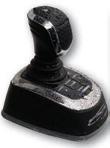

beanie. They keep your ears warm and they work well when you have the hood up on your rain jacket and, you know, the sky decides to dump rain as you’re fighting that 125-pound halibut!

As long as we are on the deck fighting halibut, let’s think about motion sickness. If you are going on the ocean or if you are going to be flying in a small plane, bring some motion sickness medication.
I know you sailed with Capt. Kid and never got even a slight wave of queasiness. Well, you’re paying a lot of money to experience Alaska. The days are long and you’re going to be tired and worn down from all the fun. The last thing you want to do is spend your time feeling sick, or worse, getting sick. I’ve seen it, so take the pills or wear the patch and have a good time!
A river guide filets freshly caught Kenai River sockeye salmon. A big part of plan ning a fishing trip to Alaska is making sure you can get your fish home on the plane. Fortunately, many outfitters can help get that salmon or halibut packed for you. (CAL KELLOGG)

Alaska is inspiring, but it can also be a harsh, unpredictable wilderness. Never forget that! There will be days when planes don’t fly and boats don’t run because the weather that had been fair took a turn for the worse when a front comes knocking out of the North Pacific.
I’ve spent my share of days tossing spinners in coastal rivers for a chance at a silver salmon when I’d actually been planning to be 70 miles out on the Gulf of Alaska dropping jigs toward massive lingcod. You’ve got to be flexible at such times and not let weather- and equipmentdictated changes get you down.

On one of those days when I got blown o the salt, I caught a 15-pound silver and on another we had a 70-plus-inch bull moose walk out into a meadow for a photoshoot. The moral of the story is this: When the weather gods give you lemons, roll with the punches and you might end up hanging out with a record-book moose, or perhaps posing with the biggest silver salmon you’ve ever seen!
ASJ

This 100-pound halibut caught in 250 feet of water provided a great fight and plenty of excellent eating for the author and is one of many great memories he’s enjoyed in the 49th state. “Alaska is inspiring, but it can also be harsh (and) unpredictable,” he cautions.
KELLOGG)
Editor’s note: Cal Kellogg is a longtime Northern California outdoor writer who contributes to ASJ’s sister magazine, California Sportsman. Subscribe to his YouTube channel Fish Hunt Shoot Productions at youtube.com/user/KelloggOutdoors.



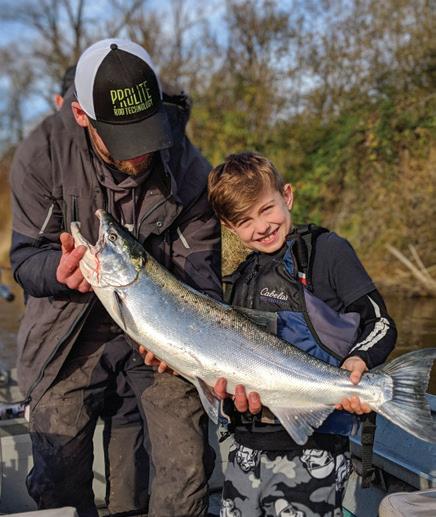


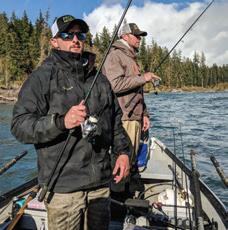

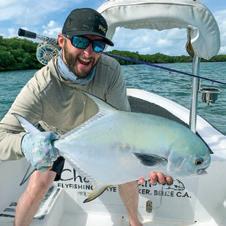
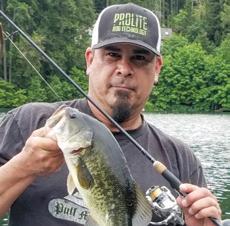


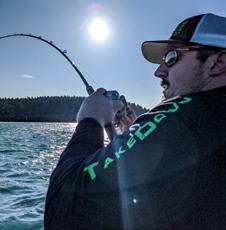


“Hey, did you lose a little underwater camera?” shouted a man over the rumble of his boat motor. My heart rate shot up as I yelled a resounding, “Yes!”
Three days prior I’d tied a little underwater camera to my braided fishing line. On the other end was a Flash Glo Squid Spinner. I hooked a hefty, hardfighting coho right away. It kept diving
into a deep hole, raking the braided line over a sharp volcanic rock. Then, about 10 feet above the camera, my line broke.
I was dejected, not because of the cost of the camera I’d just lost, but because it was only day two of a sevenday fishing trip on Alaska’s Egegik River. I was looking forward to gathering lots of video footage to study. Then, when it was recovered, I thought to myself,

“That’s impossible; with hundreds of thousands of salmon now in the river, there’s no way!”





I was wrong.
“I CAUGHT IT RIGHT out there,” Jerry Nielson pointed after handing me the camera. “The thing attacked my fly and put up one heckuva fight! I thought it was a bobber hanging on the line. I just
 BY TIFFANY HAUGEN
BY TIFFANY HAUGEN
Last month we looked at smoking and cooking what are considered some of the prime cuts of big game meat. This month we’re continuing the theme, but with what are considered the most flavorful cuts of big game meat.
Wild game shanks, or lower leg muscles, are some of the tastiest parts of an animal. The key is not letting the looks of this cut intimidate you and using the proper cooking method.
Slow cooking in a Crockpot is the key to breaking down all the connective tissues in the shanks, resulting in tender, pull-apart and flavorful meat that can be used in virtually any recipe. Smoking the shanks for a few hours prior to slow cooking adds even more to the final product, and it
smells amazing while cooking.
Smoked and slow-cooked shanks make a great sandwich that resembles an Alaska-style “pulled pork” sammy. The meat can also be used in tacos, tossed into pasta, topped on a salad, mixed with cream cheese or mayonnaise and minced into a pâté or sandwich filling, or even added to a favorite soup, stew or chili.
Two to four wild game shanks, cut from bone
1 to 2 tablespoons black pepper or seasoning of choice
One 13-ounce can full-fat coconut milk Wood chips of choice
Sprinkle pepper or seasoning rub on wild game shanks. Cover and refrigerate overnight. Remove from the refrigerator and let sit at room temperature 30 for 60 minutes.
Prepare your smoker for smoking by filling smoker pan with chips of choice. Place shanks on smoker racks, leaving space between to allow for proper smoke flow. Smoke two to three hours,




Slow cooking big game shanks can make your meat fork-tender, giving you a delicious meal from that moose or other animal you harvest this fall. (TIFFANY HAUGEN)

refreshing the chip pan two or three times, depending on how cold the temperature is where you live.
Pour half of the can of coconut milk in the bottom of a slow cooker/Crockpot, then add smoked shanks and cover the meat with the rest of the coconut milk.
Slow cook on high for five to seven hours or until shank meat pulls apart with a fork. If the shanks ball up, they can be sliced in half or into chunks and nestled back into the coconut milk to continue cooking.
Pull cooked shanks apart or chop into chunks. Serve on a bun or add to your dish of choice.
Editor’s note: For signed copies of Ti any Haugen's popular book, Cooking Big Game, send a check for $20 to Haugen Enterprises, P.O. Box 275, Walterville, OR 97489 or visit scotthaugen.com for this and other titles.


The author was surprised by how often schools of coho held atop rises in the river bottom, in very shallow water, usually when there were deeper holes on each side that remained void of fish. (SCOTT HAUGEN)
unhooked my fly, tossed the salmon on the bank and kept fishing; it still had your spinner in its mouth. Not until a buddy came over and looked at it closer did we see it was an underwater camera.”
Jerry caught the salmon 3 miles downstream from where I had lost it. The coho weighed 15 pounds and Jerry said it was the biggest fish of the trip for him. The fact the coho bit a fly, with a big lure still in its mouth, amazed me.
I held the camera and wondered what information it might have, if any. It had obviously been through a lot, as evidenced by the many salmon teeth marks on it, plus the rocks it had slammed into. I’d just charged the camera battery before I lost it.
When I removed the mini SD card and plugged it into my laptop back at camp, I was elated when it showed four hours of video footage captured. That night I looked at footage until 2 a.m.

Once home, I continued pouring over the video clips, eager to learn all I could.

WHEN THE COHO FIRST broke o , it went right back to where I’d originally hooked it. I know this because I could see the lures from my buddy and I, who kept fishing that hole, as they hit in front of the camera lens. One time the camera actually caught another coho striking a lure.

During the four hours of video, the hooked coho moved a lot, both up- and downstream. What happened every time the salmon stopped disproved what I thought was a rule; that when pink salmon were in a river with coho, the coho held tight to the bottom and the pinks stacked above them.

Here, every time the coho rested, it –along with all the other coho – was atop the stacks of pink salmon that held tight to the bottom. There were hundreds of pinks in every hole. Often the coho held barely a foot under the surface, even in 5 to 6 feet of water.
Usually, the schools of coho would hold on high points o the bottom, while the pink salmon crammed into the depressions, something else that
surprised me. In fact, the deep holes rarely held a coho, even when direct sunlight hit the water.
When the bottom varied between large rocks and gravel, the coho always held over the big rocks. It was interesting, for when the camera rested on the bottom of sandy areas, a lot of silt passed by. The coho didn’t like this and held high, but the pinks didn’t mind and stuck to the bottom.
When coho were in their own schools, holding over small gravel, it was almost always on the leading edge and along the sides, never behind it in a tailout, likely due to the sand pushing through.
Schools of coho also held tight behind and in front of big boulders, like steelhead often do. They could be seen riding the currents and upwellings in front of, to the side and behind big rocks, where the water was less taxing. In turbulent water they got moved around a lot, but stayed in the same general part of the hole.
Whenever the coho with the camera moved, it first elevated near the surface, then swam. It did this when with silvers









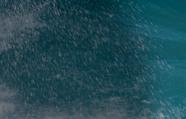



or pinks – it didn’t matter.



On the big computer, I studied the footage closely where the camera caught my buddy and I casting lures for more coho, in the hole where I’d initially broken o the fish. It recorded dozens of casts, and a number coho being hooked.
More than 90 percent of the time the first silvers to follow the spinner were the ones closest to the surface. While they may have eventually struck the spinner, it was faster fish moving from below that almost always got to it first. No matter whether the school numbered 10 or 50 salmon, the results were almost always the same: shallow fish would start to follow the spinner, then a salmon laying below reacted to the movement of the fish and the spinner above, speeding ahead as fast as it could to attack the spinner.
It proved what aggressive, tenacious feeders coho can be, and how the movement of one fish can trigger a feeding frenzy.
The lesson here: When your buddy hooks a salmon, quickly cast into the same spot. This explains why you’ll often see double hookups on salmon in one hole, proving that a bite can be “turned on” by anglers.
Haugen was so happy to have his underwater camera back thanks to fellow angler Jerry Nielson (left), who caught the fish and the camera three days later and 3 miles down stream from where Haugen had been broken o . (SCOTT HAUGEN)

I’VE BEEN FORTUNATE TO fish for salmon and steelhead for over 50 years, and it never ceases to amaze me how much there still is to learn. If you stop and think about it, what we believe we know and what we actually know are two very di erent things, largely based on speculation. Unless you’re underwater observing how fish move, act and react, you can’t say for sure what’s truly happening.
Underwater cameras reveal a lot and studying footage with an open mind has greatly educated me over the years.



Never before, however, have I had a camera actually follow a salmon around for hours, like this one.
As I shook Jerry’s hand, I thanked him for returning my camera and suggested he go buy a lottery ticket as soon as he got home, because hooking that coho was one-in-a-million odds. ASJ
Editor’s note: For signed copies of Scott Haugen's popular book, Bank Fishing For Steelhead & Salmon, and other titles, visit scotthaugen.com. Follow Scott’s adventures on Instagram and Facebook.
After Haugen’s mainline was broken and this coho swam o with his camera still attached to the leader, the device recorded four hours of footage, providing unique insights into salmon behavior in freshwater. (SCOTT HAUGEN)










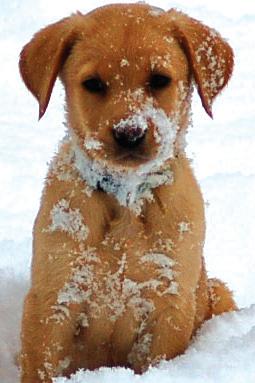

Limited quantity, $23.50 per set, available on the Specials page only – www.alumagrips .com/specials


Custom designed 3 grooves, clear type II anodized finish, tangless ambi safety relief (pocket on backside can be machined upon request).
Slimline, approximately .160" thick. (Slimline hardware is required).
black-hills.com
Black Hills Ammunition’s 10mm HoneyBad ger has deep flutes designed for optimum terminal performance without reliance on hollow points. The bullet penetrates deeply, cutting through bone and muscle to get to vitals. This is important when relying on your handgun for protection, including the possibility of bear attack. This is a solid choice for defense!

At Western Range Camps, we specialize in the design, manufacture and sale of the highest quality rangecamps, sheep camps, sheep wagons, commissaries, toy haulers and teardrop trailers. Handcrafted and built to last!

Exquisiteknives offers the finest in custom knives, worldwide. Shown is a gorgeous Young New York Special in Pearl. There is a snap in the handle that corresponds with the snap in the leather sheath for pocket carry – simply genius. A Bob Loveless pattern, John Young did a perfect rendition.

Rooted in American history, the Woodman’s Pal has been a do-it-all survival and land-clearing companion to our outdoorsmen and military since 1941. Handcrafted in Pennsylvania, its superior design trims, prunes, chops, blazes trails, and much more. Rugged enough for the Pacific Theater and Vietnam, yet versatile enough for everyday jobs.

We offer hunts of unmatched quality. Alberta whitetail, moose, caribou and goat. When you join us on a hunt in this spectacular and remote part of British Columbia, you will feel at home and welcomed into our hunting family. That same care, hard work and at tention to detail goes into everything we do.
lymanproducts.com
The Lyman Ultimate Reloading System is the only kit you’ll ever need! Outfit an entire reloading bench with premium products designed to accomplish all steps in the re loading process. No other kit from any competitor can match this untouchable value! The Ultimate Reloading System includes top-of-the-line tools and accessories like our All American 8 turret press, Gen 6 Digital Powder System, Universal Case Trimmer, Pro 1200 Turbo Tumbler, and everything else needed to turn out high-quality rounds fast! Take your passion to the next level with the Lyman Ultimate Reloading System!

davistent.com/product/sleeping-bag-cover
Our sleeping bag cover is a great way to pro tect your sleeping bag and add a little warmth. You can even sleep under the stars on a starry night! Roll your sleeping bag, pillow, and sleep ing pad up and it’s a perfect bedroll to keep all your sleeping gear organized.

thebuffalowoolco.com
This is the big boy – these are our heaviest, most insulating, most wicking socks, and most likely the warmest sock on the planet (excepting electric).
Ultrasoft bison fiber blended with fine merino wool means there is no prickly itch from these socks.

Will keep your feet warm and dry all winter long.

highadventureranch.com
High Adventure Ranch, the oldest big game hunting ranch in Missouri, was founded by Charles Puff in 1983. The ranch has over 30 big game species, with an estimated 2,000 an imals. Our guides have over 70 years of expe rience. The ranch offers lodging, home-cooked meals, and full-service meat processing.


